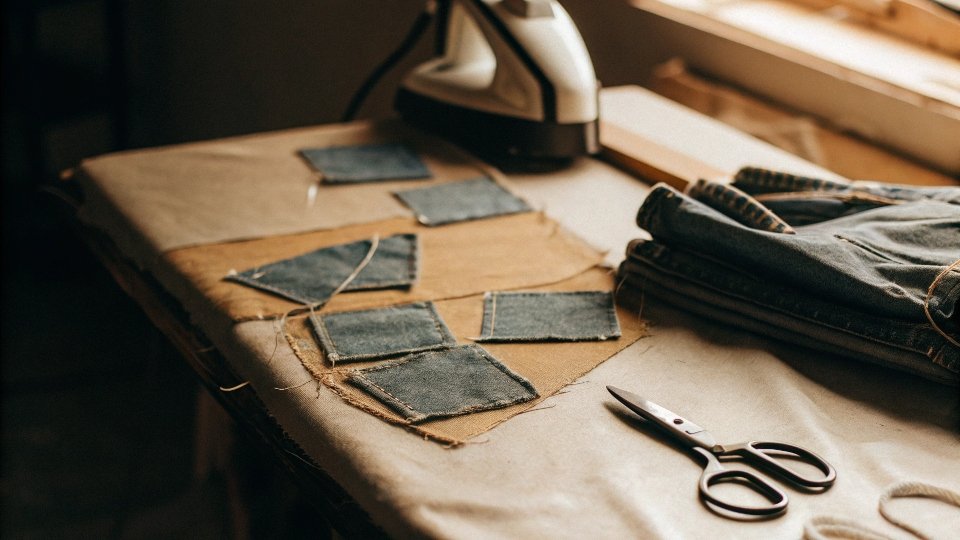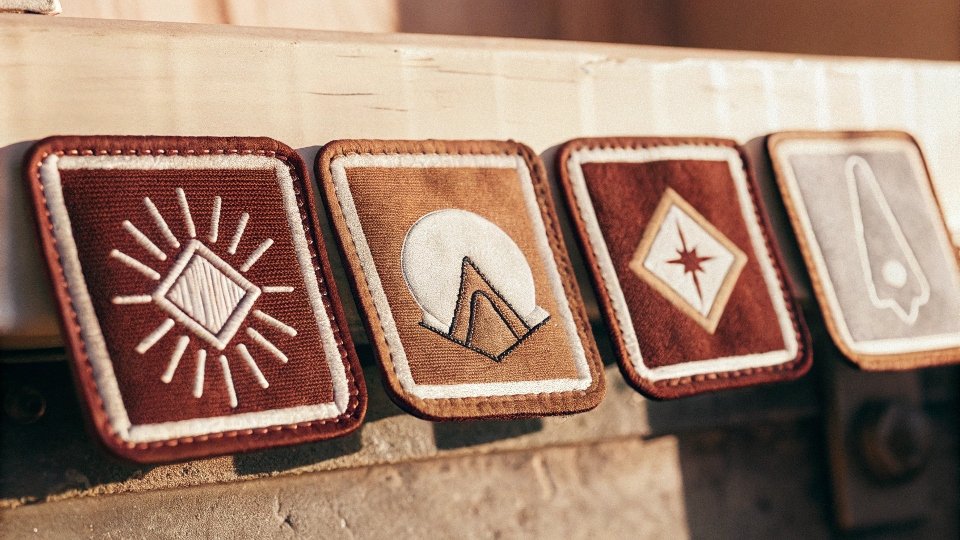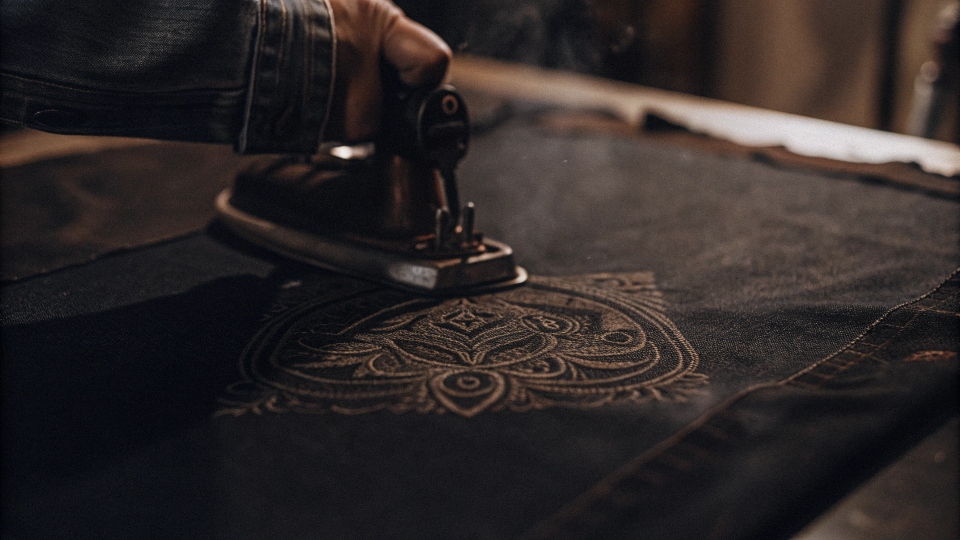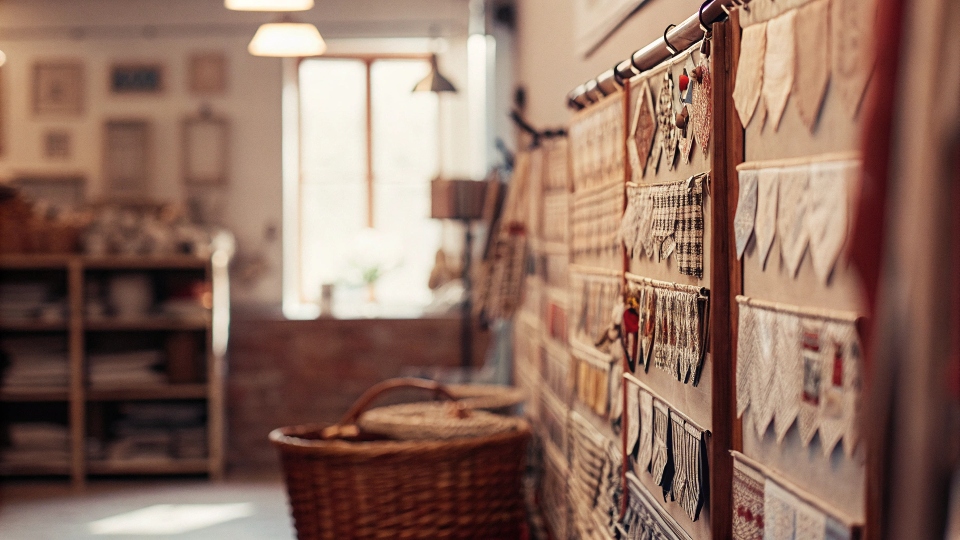You want to fix a hole or add custom style to your jeans. Store-bought patches can be pricey, and you're worried that a DIY patch1 just won't last.
Absolutely, you can make durable iron-on patches using old jeans. Denim is the perfect material for this. With some iron-on adhesive and a hot iron, you can create custom, long-lasting patches at home.
At my factory, we work with patches all the time. Designers like Dean will specify a unique patch for branding on a back pocket, or an internal patch to reinforce a distressed area.
The core principle is always the same: applying one material to another using heat and pressure to create a strong bond. You can use this same exact principle at home to upcycle old denim into something new.
The secret is using the right adhesive and enough heat to create a bond that can handle the stress of daily wear and washing.
Should you put iron-on patches on the inside or outside of jeans?
You have a patch ready, but you're not sure where it should go. Does it go on the outside to make a statement, or on the inside for a hidden repair?
Place patches on the outside for decoration and on the inside for a discreet, strong repair. An inside patch reinforces the fabric around a hole, while an outside patch2 is a style statement.
Choosing between an inside or outside patch completely depends on your goal. In our production lines, we use both methods for different effects. An external patch is meant to be seen.
It's a design element. An internal patch is purely functional, designed to stop a hole from getting bigger without changing the look of the jeans too much.
The Functional Inside Patch
An inside patch3 is your best bet for reinforcing a weak spot. If the fabric at the knee or thigh is getting thin, an iron-on patch on the inside will add strength and prevent a hole from forming.
It’s also great for mending small rips where you still want the frayed edges of the hole to show. The patch just acts as a backing, so your skin doesn't show through.
The Decorative Outside Patch
An outside patch is all about style. You use it to cover up a big, ugly hole or a stain.
Or, you just add it to a perfectly good pair of jeans to give them a custom look. Decorative patches can be any shape or size and are a fantastic way to express your personality.
| Placement | Primary Purpose | Visibility | Best For |
|---|---|---|---|
| Inside | Reinforcement, structural support | Low / Hidden | Thinning fabric, small holes |
| Outside | Decoration, covering stains | High / Visible | Large holes, style statements |
What are the best iron-on patches for jeans?
You see a wall of options at the store. You need a patch that will actually stay on through washes and wear, but you don't know how to pick the right one.
The best patches for jeans are made from durable materials like denim, canvas, or twill. For a patch that truly lasts, choose one with a high-quality, heat-activated adhesive4 and consider sewing the edges.
The strength of a patch comes down to two things: the patch material5 itself and the adhesive that holds it on.
When we source materials for DiZNEW, we test them for durability. You should have the same mindset when picking a patch. A flimsy patch on heavy denim will tear and peel off quickly.
Material Matters Most
The best material for patching denim is more denim. Using a piece from an old pair of jeans ensures the patch will have the same weight and wear-and-tear characteristics as the jeans you are fixing. If you're buying a patch, look for sturdy fabrics.
Canvas and heavy twill are excellent choices because they are tough and won't fray easily. Avoid thin, polyester patches for high-stress areas like knees.
Check the Adhesive Quality
The glue is everything. A good iron-on patch has a layer of adhesive that melts completely into the fabric's fibers when heated.
A cheap one will just sit on the surface and peel off after the first wash.
Read the reviews if you're buying online, and always follow the heating instructions on the package.
My best advice for a permanent fix? After you iron the patch on, sew a simple stitch around the edge. This guarantees it will never come off.
How do you apply embroidery patches6 to jeans?
Embroidery patches look great but seem delicate. You worry the hot iron will ruin the beautiful stitching or that the thick patch won't stick to the denim properly.
Apply embroidered patches using a press cloth to protect the threads from the iron's direct heat. Press down firmly for 20-30 seconds, then flip the garment over and press from the back.
Embroidery is one of the most popular customizations we do at the factory. Designers send us their artwork, and our machines can stitch incredibly complex designs.
Applying a pre-made embroidered patch requires a little more care than a simple denim patch because you have to protect the threadwork. The threads, especially if they are polyester, can melt under the direct heat of an iron.
The most important tool for this job is a press cloth. This is just a piece of thin cotton fabric, like an old T-shirt or a pillowcase.
Place it over the embroidered patch before you press it with the iron. This cloth distributes the heat evenly and protects the delicate threads from getting scorched or melted.
Press down with firm, steady pressure. Don't slide the iron around, as this can shift the patch.
After pressing from the front, turning the garment inside out and pressing from the back helps the adhesive fully melt into the denim, creating a much stronger bond.
Because embroidered patches are often thick and stiff, I always recommend sewing down the corners to prevent them from lifting over time.
Where can I find good iron-on patches for jeans?
You need a patch for a quick project. An online search shows millions of options, but you can't tell what's good. Where can you find quality patches you can trust?
You can find good iron-on patches at local craft stores like Jo-Ann or Michael's, fabric stores, and sometimes department stores. For more unique designs, online marketplaces like Etsy are your best option.
Finding the right patch depends on whether you need it today or if you're willing to wait for something unique. Both local stores and online shops have their pros and cons.
For Immediate Needs: Local Stores
If you need a patch right now, a physical store is the way to go.
- Craft Stores (Jo-Ann, Michael's): These are usually the best option. They have a dedicated section for patches, from basic denim repair kits to decorative and embroidered options.
- Fabric Stores: Local sewing and fabric shops will have high-quality denim7 and canvas patches8 for functional repairs.
- Big-Box Stores (Walmart, Target): They often carry basic mending kits in their sewing9 or craft aisle. The selection is usually small, but it's convenient for a quick fix.
For Unique Designs: Online Shops
If you want a patch that makes a statement, you'll find the best selection online.
- Etsy10: This is the best place for patches made by independent artists and small businesses. You can find incredibly creative, unique, and high-quality embroidered designs here.
- Specialty Patch Retailers: Many websites specialize only in selling patches. They have huge catalogs sorted by theme.
- Amazon: The selection is massive, but the quality can vary a lot. My advice here is to read the customer reviews very carefully before you buy.
Conclusion
Making or applying iron-on patches is an easy way to repair or customize your jeans. By choosing the right materials and using the proper technique, you can get a professional result that lasts.
-
Learn how to create your own DIY patches at home, saving money while adding a personal touch to your jeans. ↩
-
Learn the best techniques for applying outside patches to enhance the look of your jeans. ↩
-
Understand the benefits of using inside patches for reinforcing jeans without compromising style. ↩
-
Discover the best adhesives for iron-on patches to ensure they stay put through wear and washing. ↩
-
Explore the best materials for making patches to ensure they last and match your jeans. ↩
-
Explore methods for applying embroidery patches safely to maintain their beauty and durability. ↩
-
Find out why denim is the ideal choice for patches, ensuring a perfect match and durability. ↩
-
Learn about the benefits of using canvas patches for durable and stylish jean repairs. ↩
-
Get insights on sewing techniques to secure patches for long-lasting repairs on your jeans. ↩
-
Discover unique and creative patches from independent artists on Etsy to customize your jeans. ↩


[^3] and an internal reinforcement patch on jeans](https://diznewjeans.com/wp-content/uploads/2025/10/place-patches-on-the-outside-for-decoration-and-.jpg)








